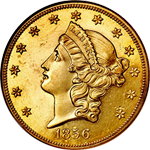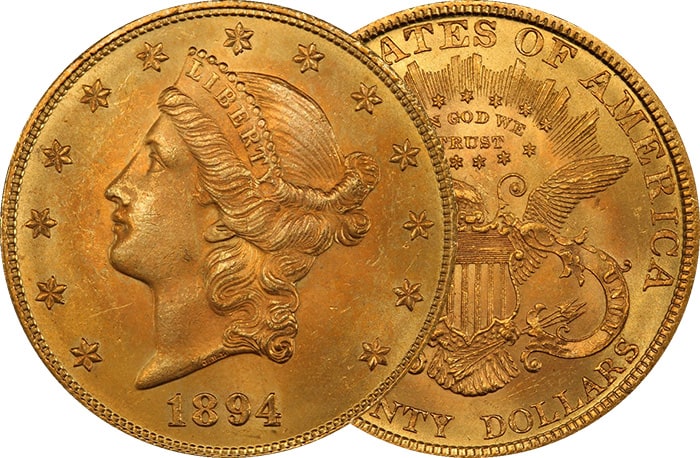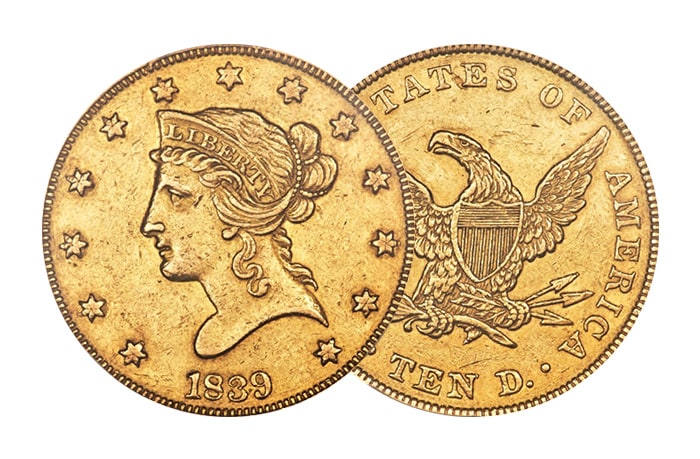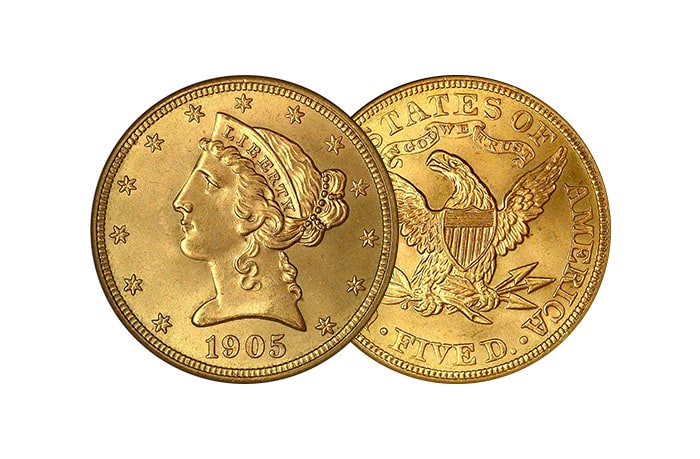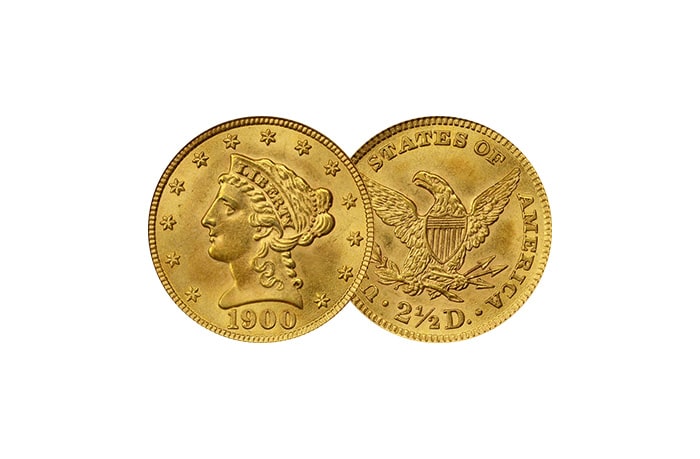The Liberty gold coin, also known as the Liberty Head coin or the Coronet is a double eagle ($20) gold coin of the United States. The “eagle”-based terminology (“eagle,” “half-eagle” and “quarter-eagle”) for American gold coins is rooted in an Act of Congress that authorized the establishment of the U.S. Mint and the regulation of U.S. coins. The first double eagle was struck in 1849 during the California Gold Rush and now resides in the Smithsonian Institution in Washington, DC.
Under the Mint Act of 1792, the largest denomination coin was the $10 gold eagle. In the 1830s, various people suggested the issuance of a large American gold coin, which was ultimately considered after the California Gold Rush, when great amounts of gold became available. A bill allowing for the issuance of the gold dollar and the double eagle eventually passed in both houses and signed by President James K. Polk on March, 3, 1849. After several conflicts at the Philadelphia Mint, Chief Engraver James B. Longacre designed the coin and it started being produced in 1850.
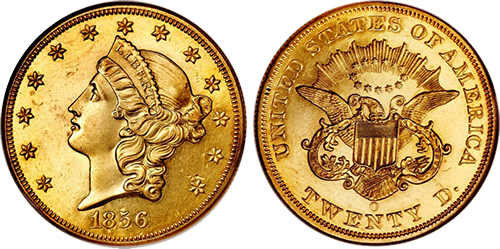
The obverse side features the head of Liberty in a Greco-Roman fashion, facing left with her hair pulled back in a bun. She is wearing a coronet that includes the lettering “LIBERTY” and she is surrounded by thirteen stars and the mint date. The reverse design consists of a heraldic eagle, holding a double ribbon on which “E PLURIBUS UNUM” is inscribed. The double ribbon represents the denomination of the piece and is also a variant on the Great Seal of the United States. The eagle protects the shield (which stands for the nation) and holds an olive branch and arrows. Thirteen stars, representing the original states, are arranged in a halo above the bird, together with an arc of rays. The engraver’s initials, JBL, appear on the truncation of the original states. Later types of the Liberty Head double eagle included the inscription “IN GOD WE TRUST” within the halo.
The Liberty Head double eagle contains 90% gold and 10% copper.
Three different types of the Liberty Head double eagle were produced from 1850 to 1907. Type I (1850-1866) was struck in Philadelphia, New Orleans and San Francisco. As a matter of fact, just over half of the double eagles struck between 1850 and 1933 were minted in San Francisco. While most of the type II (1866-1876) coins, which bore the inscription “IN GOD WE TRUST,” were struck at the mint in San Francisco, a few thousand were minted in Carson City, Nevada, which had just opened in 1870. Thus, the 1870-CC double eagle is a great rarity; one sold for $414,00 at auction in 2009. Type III (1877-1907) was altered by Chief Engraver William Barber. He modified Liberty’s neck, moved the tip of the coronet, spelled out the denomination (from “TWENTY D.” to “TWENTY DOLLARS”), and enlarged the phrase “E PLURIBUS UNUM.” This version of the Liberty Head was struck in Philadelphia, New Orleans, San Francisco, as well as in Denver.
Saint-Gaudens, the most prolific sculptor in American history, designed a new Liberty double eagle coin when Theodore Roosevelt commissioned him to beautify American coinage in 1904. The $20 high-relief gold piece designed by Saint-Gaudens is widely regarded as the most extraordinary American coin ever struck. Initially, the U.S. Mint insisted on a low-relief version because a high-relief coin would have required up to eleven strikes to bring out the details and it would not have stacked easily for banking purposed. As only 12,367 coins were struck in 1907, Liberty gold coins can exceed $10,000 in circulated grades and reach almost half a million dollars in uncirculated grades.
Even though large amounts of double eagles were melted in the 1930s under Franklin D. Roosevelt, millions remained in banks. In fact, many were found in the vaults of European banks in the early 1940s and were subsequently traded on the numismatic market. Many more Type I double eagles have been recovered from shipwrecks, bringing many high-grade early double eagles to the market; in addition, their romantic allure of being “treasure coins” further enhances their public demand.

